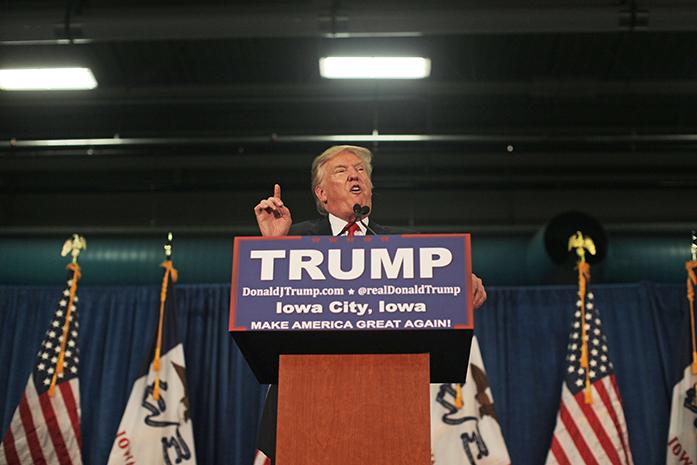Joe Lane
Joseph-lane@uiowa.edu
I’d like to paint a picture for you. It is the summer of 2015 and presidential hopefuls are beginning to announce their candidacies. However, in this hypothetical picture, no candidates would be allowed to have Super PACs, which would put them in the same boat as notable contenders Donald Trump and Sen. Bernie Sanders, I-Vt. Moreover, candidates in this imaginary world can’t spend any money whatsoever on advertising.
In this utopia of sorts, the term “political advertisements” is unheard of. No one is debating going positive or negative in the ads because there simply are no such ads to speak of. There isn’t a single candidate with an upper hand because they have more money or have advertised better.
Rather, in this world, all media attention comes from “earned media.”
As it relates to marketing, “earned media” is the attention a company, or in this case a candidate, receives for actions both positive and negative. For example, when Trump says he will pay the legal fees of individuals who injure protesters at his rallies, CNN covers those statements. CNN’s coverage is then broadcast to the world and Trump has successfully gotten his orange noggin on TV sets and laptops across the country without spending a dime. So whether or not you like it, Trump earned that media.
The problem with earned media is that it includes all things positive and negative. If a candidate says something offensive or fails to follow through on a campaign promise, that, too, gets covered. So generally speaking, earned media are important but risky because they may cause more problems than they solve.
In this hypothetical election scenario, Trump would be dominate the election, and it wouldn’t even be close. Sound familiar? This scenario is not entirely hypothetical.
RELATED: Olympics represent more than sports
The level of earned media (in terms of approximate dollar value) for this election is truly unprecedented. One research firm, mediaQuant, tracks media coverage of a given client, whether that be companies or political candidates, and computes the value of that coverage based on advertising rates. It estimates Trump’s earned media accumulation at nearly $2 billion. Hillary Clinton comes in second with $746 million in earned media. Sanders has $321 million, and the rest of the field has never been even remotely close.
Say whatever negative things you will about Trump — and odds are I’ll agree with you — but if there is one thing he is unquestionably good at, it is earning attention. Last month alone, according to a New York Times article, Trump earned $400 million of free media, more than John McCain spent on his entire presidential campaign in 2008, according to campaign-finance tracker opensecrets.org.
As infuriating as some of Trump’s hateful comments can be, he is changing the landscape of American politics. He has made social media arguably the most important tool in elections; while many will argue President Obama was the first to truly use social media to its full ability, Trump has taken it to a new level. His comments that induce attention-grabbing headlines are exactly the type of thing that succeeds in today’s social-media climate.
Earned media is the direction elections are going. Amid debates over the prominence of superdelegates and the seemingly decreased importance of the popular vote, earned media are proving that elections are still about the voice of the people. Even with Super PACs, the candidates with the most earned media are those that are doing the best this cycle.



